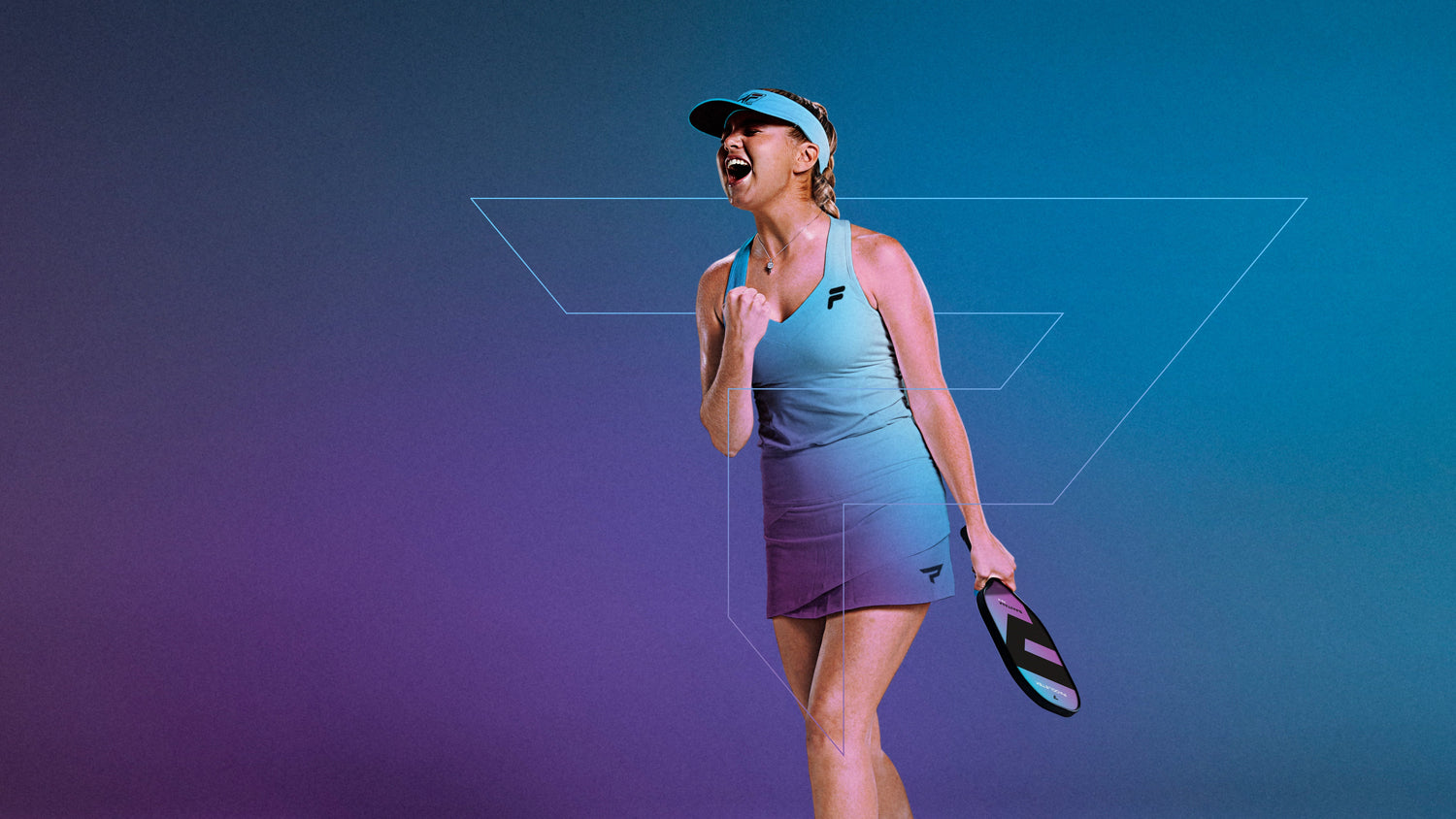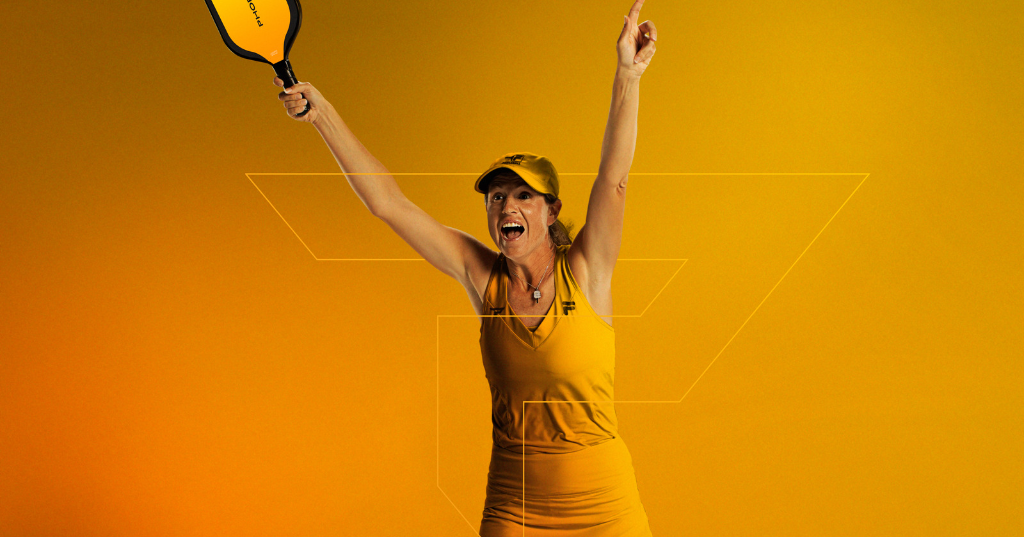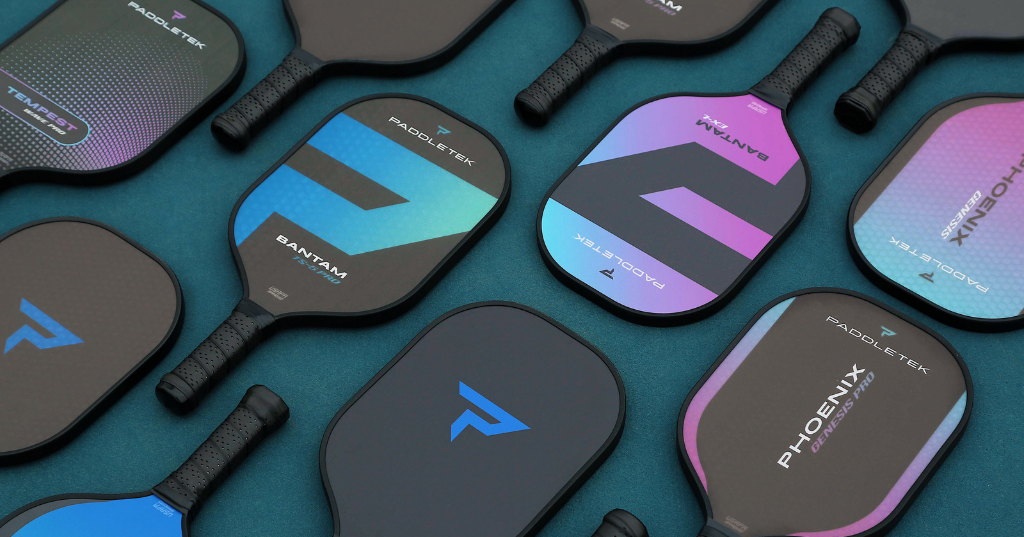If you’re looking to level up your singles pickleball game, there are plenty of ways – but where do you start? So many strategies, so little time! Focus on key tactics that will ensure a victory now and keep refining the rest as you go.
Here are 5 can’t-miss singles pickleball strategies:
- When your opponent moves right or left, do the same
- Use your forehand over your backhand
- Get to the kitchen line
- Use deep serves as often as you can
- Keep your opponent guessing by changing up your serves and returns
Apply these strategies to your singles pickleball games and watch the results fly in. Well, that is so long as you understand the intricacies of each strategy. So keep reading as we dissect each one in greater detail.
What Are the 5 Main Strategies for Singles Pickleball?
1. When Your Opponent Moves Left or Right, Do the Same (But Remain Near the Centerline)
In doubles pickleball, one of the strategies is to move as your partner moves. That’s how you create a true sense of unity and minimize gaps your opponents can capitalize on. So why in the world do you have to move like your opponent does in singles pickleball?
Well, there’s no sense of unity to worry about here, but you do still have to be concerned about gaps.
Let’s say that on one side of the court, your opponent goes right. You decide to try the contrarian approach and move left. Now there’s this big opening on the court between you two. You’re both in a vulnerable position, but whoever is closest to the centerline is in the less vulnerable spot.
If that’s not you, then your opponent can more easily reach the non-volley line while you’re still straggling. While you can serve even if you’re not near the centerline, returning the serve is more difficult because of the greater distance. And if you miss the ball, then you’ve officially lost the point.
Keep the centerline as your point of reference the entire time you’re playing. Shuffle left or right as your opponent does, but with the goal of returning or “resetting” to the middle if you get pulled too far in one direction.

2. Use Your Forehand over Your Backhand
When playing pickleball, you’ll find opportunities to use both a forehand and a backhand hit. If you need a refresher, a forehand is usually your strongest and most accurate shot.
We're sure you know the difference since forehands and backhands are common concepts in all racquet and paddle sports, plus they're a regular occurrence in every game in pickleball. But complete pickleball beginners may struggle to hit a backhand with the same power or accuracy as a forehand. But rarely do we stop to think about why the difference matters.
- Forehand Mechanics: You hit a forehand from the same side of your body as your dominant hand. Doing so means your paddle arm will be extended from your side, and the inside of your arm and your palm are facing the net as you swing.
- Backhand Mechanics: In a backhand stroke, your paddle arm is stretched across your body as you swing, and the back of your hand holding the paddle will be facing the net.
The truth is, you need to be able to hit both, but when you’re returning a serve, you want to try to get to it with your forehand. The reason? Well, there are several reasons, actually.
- Power: Unless we’re talking about the most seasoned pickleball players, most players have a much less powerful backhand compared to their forehand.
- Weakness: Showing weakness is one thing you want to minimize when playing singles pickleball (and doubles too, really). It’s fine if your opponent shows an exploitable weakness, but you want to look as solid as a rock.
- Accuracy: Another reason to limit your backhands is that they tend to be more difficult to aim for beginners than forehands. That’s because hitting a forehand comes more naturally.
- Thought Delay: There’s also more than one way to hit a backhand – one-handed or two-handed. That decision needs to be made quickly or you will be late to hit the ball.
We’re not recommending ignoring backhands altogether. They do have their benefits and are worth practicing until they feel as natural to you as forehands. You just want to limit them in your pickleball repertoire until they are strong enough.

3. Get To The Kitchen Line
We’ve talked about the importance of keeping by the centerline when serving and using it as your anchor when moving as your opponent does. Here’s another pointer on your court positioning.
As a whole, when playing singles pickleball, it’s best to get to the kitchen line before your opponent does and hold that line. Why? Well, there's a whole host of reasons to play at the kitchen line.
- Reduce the Gaps: If you’re further from the non-volley zone or kitchen, you have way more court to try to protect. That might have been ingrained in you already, having played a couple of competitive games of pickleball. By being at the kitchen line, you’ve taken away a lot of easier shots for your opponent.
- Increase Offensive Opportunities: At the same time, you’ve opened up more easy shots for yourself if you’ve managed to keep them deep.
- Shot Placement: You also have solutions if your opponent nears the non-volley line when you’re already there. Hitting at their feet when they’re moving is always a good option.
- Shot Opportunities: Another is to hit a lob, using a deep overhead shot that will launch the ball quite high. Hitting a lob is going to send your opponent to their baseline, where they’ll have to play more defensively rather than offensively. You can surprise your opponent with a lob from almost anywhere on the court. Another option is to hit a drop shot and aim it for the corner of the kitchen on their backhand side. Finally, you can also always rely on a hard passing shot. Again, aiming for their backhand can put your opponent in a tough position.
So which is the right type of hit? Well, that’s up to you and what you’re the most comfortable and experienced in doing.
Rarely is the answer hitting it right at your opponent. Singles is way more about movement than doubles so use that knowledge to your advantage by making your opponent move more than you have to. In a way, try to harness the power of the court size and challenges of this style of game for yourself.
4. Use Deep Serves as Often as You Can
Serve accuracy is a pivotal singles pickleball strategy, but once you graduate from that point, it’s time to deepen your serves. This means you'll need to hit with power and depth, which will make you a formidable opponent on the pickleball court.
It’s important to keep your pacing up from shot to shot and learn how to dial in your power so you don’t hit the ball out of bounds and possibly cost yourself a point. This is handy for serving as much as it is returning serves.
When you’re returning a serve deep, try to have it land within the last foot before your opponent's baseline. This will keep them deep without you needing to take too much risk of landing out of bounds.
Once you have a hang of that, then you should start to work the corners. A deeper shot into the court corners is an excellent strategy for moving your opponent out of position while playing singles. The corners where the baseline intersects the sideline are the furthest distance to the center of the net on either side of the court, so forcing your opponent to play from there as much as possible is going to naturally make your opponent will be hurried and unable to prepare for their return shot in time.
Done successfully, your job will simply be to get to the non-volley line and smack ’em with a good passing shot to try to finish the rally.
Your opponent may go deep as well, so that’s something you have to anticipate. Always try to answer their deep shot with another deep shot of your own, don’t let them get to the kitchen line for free. Make them earn it!
If they get to the kitchen line anyway, use a lob shot to back them up again. It can be difficult to master the lob shot, but if done successfully, it's an incredibly powerful arrow for your quiver. The goal is to keep them deep while you hold the advantage at the kitchen line.
Drop shots are also great if you need to reset during a chaotic point, but when your opponent is deep you just gave them a free trip to the kitchen line. They can also get into position for a good passing shot that might catch you by surprise!
So make sure you're aware of your opponent's position before deploying the drop.
5. Keep Your Opponent Guessing by Changing Up Your Serves and Returns
Speaking of catching people by surprise, that’s a strategy all on its own. In the beginning, when you’re still learning pickleball, you'll be at a point where you know more ways to play the game than you can execute with exceptional quality.
You can’t possibly pull these game-changing (and possibly game-winning) shots out of nowhere because you just don’t know how to do them yet. And that's totally fine.
As you begin gaining more experience through play, the techniques and tactics you can deploy will begin to expand. have to play up your techniques and tactics.
If you feel like you’re relying too much on any particular strategy, then you can bet your opponent has realized the same thing. Why give them the opening to capitalize and possibly win? That's a great sign that you need to mix things up, or perhaps it's a late warning sign that you should have mixed your gameplay up sooner.
Varying how you play doesn’t mean abandoning everything you know and what has worked for you so far.
It could be as simple as changing up your deep serve direction or hitting more softly when your opponent thought you’d go deep. If you haven’t yet used lobs or volleys, you could begin strategically introducing these into your playing style.
These kinds of moves, especially when used later in a game, make it harder for your opponent to guess what you’re going to do next. They can’t see you from a mile away and shut you down. So try to be unpredictable, there's victory in this simple tactic alone.

What Will Your Next Singles Pickleball Play Be?
Growing as a pickleball player is all about stocking up on the right strategies. As a rookie, adding the essential skills to your repertoire gives you a huge leg up. For the seasoned pro, it’s all about having an arsenal and then releasing one or two strokes of genius at the right time, when your opponent least expects it.
For all experience levels, you want to instill doubt in your opponent's mind. Committing these 5 strategies to mind and practice, no matter what shape your pickleball skill set takes, will help you conquer the courts quicker.




Leave a comment
This site is protected by hCaptcha and the hCaptcha Privacy Policy and Terms of Service apply.